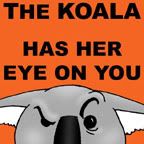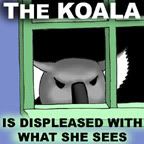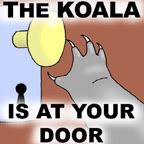Thank you, patient readers, for faithfully checking in every now and again, even when there was nothing to read. Here I am again, slightly tattered, but nothing a glass of wine and a big bag of chips won't fix. Video is safely edited and all twelve minutes of it will soon be unveiled, hopefully to the accolade of much corporate success for my client.
So, let's talk for a while about endings.
I read a book recently that didn't have one.
I'll sketch the plot - a woman is kept prisoner by her family in a suburban home, while three strangers who have cottoned on to this try to rescue her. At the end of it, they succeeded. But, you know, it wasn't an ending.
I'm sure that sounds strange, but let me explain that the members of the family and the rescuers all had sub plots. That made the book multi-layered, because every character was detailed, had their own motivation and their own reason for being there.
Not a single one of those sub plots was tied up. Not one. I put the book down feeling utterly discontented and frustrated.
If anyone read Crusie Mayer's workshops last year, they talked about the introduction of plot and sub plots as a formula that had a specific order. I'll probably mess this up, but basically plots come into play like this, in order of importance: ABCDE. In an ideal world they should be tied up in reverse order - least important first: EDCBA. So the overall plot structure of your story looks something like this: ABCDEEDCBA. That's a simple version. But it helps me to understand why the book I read was so frustrating. Its structure was ABCDEA.
It freaked me out. In addition to the discontent and frustration I actually felt slightly disorientated when I put the book down. The loose ends in my head were aching. It took me a few days of thinking and remembering the Crusie Mayer formula to figure out exactly why. There's a dissatisfaction to a half-finished job; and equations without all their elements will never work out.
Subscribe to:
Post Comments (Atom)












7 comments:
I don't mind being left with a dangler as long as I can interpret the side-to-side wobble and speculate upon the possibilities from an informed perspective.
Multiple unresolved danglers sounds like a nightmare.
Glad to hear the film is in the can. Wine and chips sounds like the perfect reward — as long as you don't dunk.
i'm with you, mc... an ending, 'happy' or otherwise, is required... i like to 'end' with a potential 'beginning'... of the next tome ;)
grats on completing the vid, hope it goes well with the suits....
I'm also in the camp that doesn't need full closure - but the ending does have to make sense to me - the loose ends the ends that might be loose in life - and you the reader know how the characters could wrap things up, if only they would. And the promise of more to come, I like that idea as well.
Glad you're back around some, girl!
Oh, I'm a big fan of open endings. I have no need for the 'and they got married two year's later and had three children and lived happily ever after'. But there's a difference between an open ending and no ending.
I also very much like-
Yeah- I see what you mean. The ned does need to come to the reader in a fluid fashion- it needs to flow naturally from the narrative, so it seems inevitable.
If most of the subplots are wrapped up it can work fine, but to leave them all dangling? I'd toss that book across the room!
I really like the simple model you share here; I hadn't thought of it in that way, and I'll have to keep that in mind for future reference.
Post a Comment